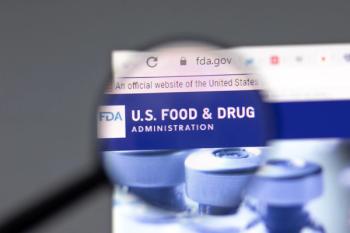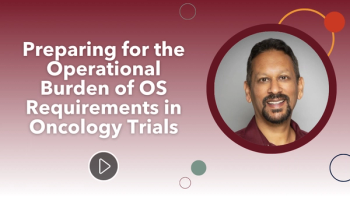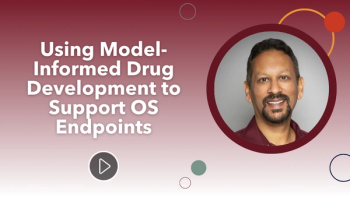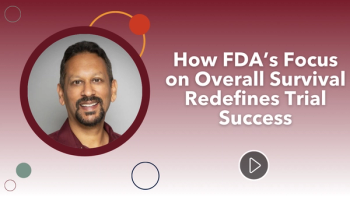
- Applied Clinical Trials-06-01-2005
- Volume 0
- Issue 0
Streamlining Adverse Event Reporting in Trials
Regulators and researchers seek to curb the overload on IRBs and harmonize AER policies.
One of the biggest challenges facing the human research community is the soaring volume of adverse event reports (AERs) that sponsors and clinical investigators file with institutional review boards (IRBs). The current process is burdensome, inefficient, and fails to provide IRBs with the information they need to fully protect the rights of human study participants. The situation was described graphically at a public meeting in March sponsored by the Food and Drug Administration, which is seeking to understand the existing reporting system and how FDA policies affect it.
The Western Institutional Review Board reported that it receives 12,000 AERs from sites and 14,000 from sponsors each year--with 70% of these reports identified as "not related" to the study at hand, according to Executive Director Owen Reese. The University of Pennsylvania similarly gets some 13,000 reports each year from industry sponsors via Penn investigators, compared to about 250 research safety reports each week for its own studies. Yvonne Higgins, director of Penn's Office of Regulatory Affairs, said that her office instructs investigators not to file all these redundant sponsor reports, but that researchers insist that FDA regulations require them to do so.
Solving this problem may be difficult. Many AERs involve relatively minor and anticipated events. Reporting policies vary between FDA and the National Institutes of Health (NIH), and even differ within FDA for drugs and medical devices. IRBs say they cannot handle the AER deluge from investigators at external sites, but do not agree on how to curb the scope and frequency of such filing.
Report everything
Current rules encourage researchers and sponsors to report all "unsuspected," "serious" or "related" adverse events to a number of parties, including IRBs, FDA, and other regulatory and research agencies in the United States and overseas. These policies worked well when most clinical studies were conducted at a single site, but they are wreaking havoc with the increase in multisite investigations involving dozens of researchers and thousands of participants.
The problem is that all investigators involved in a multicenter trial send adverse events to all other investigators, who then file this information with their local IRB. As a result, a single event can generate multiple reports to multiple organizations--all obliged to examine and assess the information. The aim of this approach is to alert investigators to possible problems arising among study participants at other sites. It similarly may be helpful for IRBs and investigators to know that an adverse event from a local trial has occurred elsewhere.
However, the potential benefits of broad reporting are small because most of the thousands of AERs from investigators are incomplete and uninformative. Researchers dealing with blinded studies seldom know whether an adverse event is related to the study therapy or to other factors. And a single investigator in a multisite trial has trouble assessing the significance of a health event among one or two patients.
In addition, policies differ on what kind of events should be reported, and terminologies vary on how to describe safety problems. FDA and ICH good clinical practice policies encourage expedited submission of any AERs that appear serious, unexpected, and "at least possibly related" to the investigative product, explained Jean-Louis Saillot of the Schering-Plough Research Institute, appearing at the FDA meeting on behalf of PhRMA. Sponsors monitor investigators to make sure that they fulfill AE reporting obligations, Saillot acknow-ledged. The companies then submit these reports to regulatory authorities as well as to other investigators, who, in turn, transmit them to their IRBs.
Although there is general agreement that IRBs should primarily be responsible for ensuring the safety of research participants enrolled in studies under their auspices, most observers recognize that IRBs also need to be aware of unanticipated problems elsewhere that could affect local studies. The research community wants FDA to provide clear guidance to sponsors on what AERs have to be sent to investigators to pass on to the local IRB. A number of proposals for improving AER quality and for limiting report volume were presented at the FDA meeting by sponsors, IRBs, research organizations, investigator groups, and others, demonstrating the complexity of the issue:
- Limit AERs to serious, life-threatening events. This sounds good, but definitions differ as to what events are "serious" and "unexpected," encouraging investigators and sponsors to report everything that could be considered important.
- Eliminate individual case reports on adverse events from investigators to IRBs. Change the rules to require investigators to submit AERs only to sponsors and not directly to IRBs. Sponsors back this approach, but research institutions fear a loss of control and reduced oversight.
- Instruct investigators to file AERs only with the local IRB and sponsors, and not send them to other investigators. This would end routine transmission of "external" AERs to IRBs, but opinions differ on how to identify those safety reports that would be sufficiently serious to warrant broader filing.
- Give sponsors responsibility for assessing investigator reports and for deciding which should be reported immediately to IRBs, regulators, and other parties. Sponsors would provide periodic (probably quarterly) summaries of all other AERs to IRBs and investigators, explained Vish Watkins of Eli Lilly, to supplement annual reports required by FDA. However, some IRB officials feel that sponsors are not sufficiently objective to handle this task and that a third party should review safety reports.
- Expand the role of Data Monitoring Committees (DMCs) to analyze AERs and identify serious events. FDA could require DMCs to review safety reports for very large or particularly risky trials in its guidance on DMC operations, which has been under development for many months. For those clinical studies without DMCs (a.k.a., data safety monitoring boards), sponsors would assume oversight. Pharma companies, however, are not enthusiastic about handing over this important function to third parties.
- Identify a central IRB for multisite studies that would receive and analyze all AERs. Local IRBs would be responsible for assessing only those AERs filed by its investigators, which then would be sent on to the central IRB.
- Build a national electronic AE reporting system. This proposal from the Association of Clinical Research Professionals envisions a process able to identify serious adverse events that warrant immediate reporting and eliminate much paperwork. One model is the system for monitoring gene therapy trials devised by FDA and the National Institutes of Health (NIH), which is being used by some NIH-supported research centers. Major academic research institutions already are establishing Web-based reporting systems that can identify serious internal safety reports that need to be sent to IRBs, plus provide summary reports of other events.
Seeking harmony
Guidelines for addressing these issues may come from the federal adverse event task force, which was formed last fall to develop guidance on harmonizing federal government clinical adverse event reporting policies. The group is headed by Amy Patterson, director of NIH's Office of Biotechnology Assessment, and includes representatives of FDA and other HHS offices, plus the Departments of Defense and Veterans Affairs. After spending several months mapping the various agencies' safety terms and definitions, such as "serious," "unanticipated," and "unexpected," the group is developing a "common language" for discussing medical events and regulatory actions.
The task force is also analyzing what safety information is now collected by public and private entities, how it is assessed, and how the information is used. This work flow analysis will help identify best practices and evaluate reporting requirements in order to outline criteria for when AERs should be forwarded to other sites. To facilitate such information exchange, the panel also is developing a Basal Adverse Event Report (BAER). This would establish baseline core medical information to be included in AERs for all agencies, but could be supplemented by individual agencies or sponsors. The BAER would reflect data models adopted by the International Conference on Harmonization (ICH) and data filing protocols established by FDA and federal health agencies. Draft proposals from the task force are expected by year-end.
On the international front, the Council for International Organizations of Medical Sciences (CIOMS), which has proposed common policies for international postmarket drug adverse event reporting over the last 20 years, recently moved to consider surveillance and safety reporting related to clinical trials. Last month, the CIOMS VI working group on managing safety information from clinical trials of medicinal products issued a final report offering recommendations for implementing common safety information reporting systems around the world. The report addresses expedited and periodic safety reporting and draws from provisions in ICH documents, World Health Organization guidelines, and relevant European Union directives and guidances.
The report advises the research community to replace the current practice of sending large numbers of individual case reports to IRBs and IECs. Sponsors instead should submit "periodic and ad hoc communications" to investigators and ECs, with expedited communications focusing on "significant new safety information" that has "implications for the conduct of the clinical trial." This approach follows the European policy of expedited reporting of serious and unexpected suspected adverse reactions (SUSARs), but still leaves it to investigators to decide what events warrant more aggressive reporting.
The CIOMS VI report (available at www.cioms.ch) is likely to form the basis for additional ICH guidance on this issue and may shape FDA deliberations on its own AER policy for trials. Common reporting approaches for all research sites will be important as more research is conducted in foreign countries.
Articles in this issue
over 20 years ago
Debating Moral Issues in Developing Countriesover 20 years ago
Lab Data in Remote Regions: Meeting the Challengeover 20 years ago
Informed Consent: Imparting Knowledge or Signing a Form?over 20 years ago
Discovering South Africaover 20 years ago
Women and Trials: When Is Gender a Consideration?over 20 years ago
Entering the Realm of Flexible Clinical Trialsover 20 years ago
Staple Yourself to a CRFover 20 years ago
Do More with Less: The New eRO Modelover 20 years ago
A New GCP Bible Is BornNewsletter
Stay current in clinical research with Applied Clinical Trials, providing expert insights, regulatory updates, and practical strategies for successful clinical trial design and execution.






.png)



.png)



.png)
.png)
